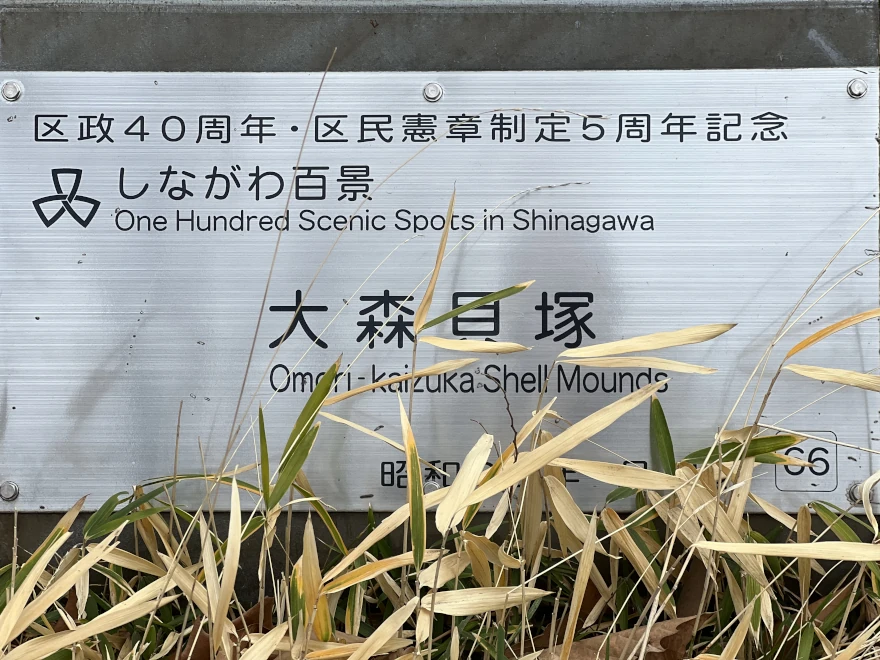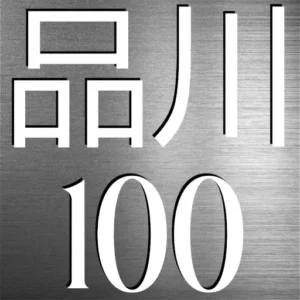🦪 Ōmori Shell Mound – Where Japanese Archaeology Was Born
In 1877, a curious American zoologist riding the train from Yokohama to Tokyo glanced out the window near Ōmori and noticed an unusual rise in the ground. That moment would change the course of Japanese archaeology forever. The man was Edward Sylvester Morse, a scientist who had come to Japan to study marine life. Instead, he became the father of modern archaeology in Japan by initiating the first scientific excavation of a prehistoric site: the Ōmori Shell Mound.
The Ōmori Shell Mound (Ōmori-kaizuka) straddles today’s Shinagawa and Ōta wards. It is an ancient refuse heap—composed of mollusk shells, animal bones, broken pottery, and tools—left behind by Jōmon-period hunter-gatherers over 2,000 years ago. Morse’s preliminary dig, aided by local laborers, unearthed Jōmon pottery shards, animal remains, and rudimentary tools. His discovery marked the dawn of prehistoric studies in Japan and demonstrated for the first time the antiquity of human habitation in the archipelago.
Morse documented his work in English in a monograph titled SHELL MOUNDS OF OMORI, published by the University of Tokyo in 1879. It was promptly translated into Japanese as 『大森介墟古物編』 and became a foundational text for Japanese archaeologists. The excavation was also symbolic—it showed that even a foreigner with no formal training in archaeology could shine a light on Japan’s forgotten past, using the tools of modern science.
Two commemorative stone markers now honor the location of this historic site. One stands in Shinagawa’s Ōi 6-chome district and the other in Ōta’s Sannō neighborhood. Both were installed in the early Shōwa era (1929–1930) by Japanese intellectuals, scientists, and newspaper publishers to ensure that future generations would remember this groundbreaking moment. The mound itself, though disturbed over time by urban development, remains a designated historic site (史跡) and is preserved today as a small garden park.
For visitors, the site is modest in scale, but its cultural and academic weight is enormous. While the shells may no longer be visible to the casual eye, you are standing at the birthplace of archaeology in Japan. Nearby educational signage and a small garden environment invite quiet reflection on how far the science—and Tokyo—have come since that train ride in the early Meiji era.
👤 About Edward Sylvester Morse
Edward S. Morse (1838–1925) was an American zoologist and ethnologist best known for his pioneering work in Japan. Originally invited to lecture at Tokyo Imperial University on marine biology, he quickly shifted his focus after noticing the shell mound during his commute. Morse was not trained as an archaeologist, but his methodical and scientific approach—complete with sketches and documentation—laid the foundation for Japanese prehistoric studies. He later became one of the first professors at Tokyo University and remained a beloved figure in the academic and cultural exchange between Japan and the West.
🧭 Omori-kaizuka Visitor Information
Address: 6-chome-3 Ōi, Shinagawa-ku, Tokyo 140-0014 (near boundary with Ōta Ward)
Access: 8-minute walk from JR Ōmori Station (North Exit)
Hours: Open 24 hours (public park)
Admission: Free
Additional info: Park includes informational signs, stone monument, and landscaped greenery. Quiet residential area—please respect local noise levels.
Note: Located near residential buildings and the train tracks. Be mindful of space and noise.
Where is it?
| what3words | ///strain.delay.lorry |
| latitude longitude | 35.593414, 139.729828 |
| Nearest station(s) | Ōmori Station (Keihin-Tōhoku Line) |
| Nearest public conveniences | In the park |
Show me a sign.

A prominent Hyakkei sign stands near the base of the stone monument, visible from the street.
Withervee says…
It’s amazing to stand where Tokyo’s deep past was uncovered. The signage may be modest, but the story is monumental.
Not much shade — bring water if you’re out in summer. History doesn’t come with vending machines.
Site Character
- Lifestyle 生活 (Seikatsu): ✔️
- Historical Significance 歴史 (Rekishi): ✔️
- Atmosphere/Natural Features 風土 (Fūdo): ✔️
Who in their right mind would vote for this?
- Archaeology fans
- Historians
- Schoolchildren on field trips
- Jōmon nerds
- Edward S. Morse fans
Further reading
While you’re there…
Walk north to Kashima Shrine or stop for lunch at one of the noodle shops along Daiichi Keihin Avenue.

